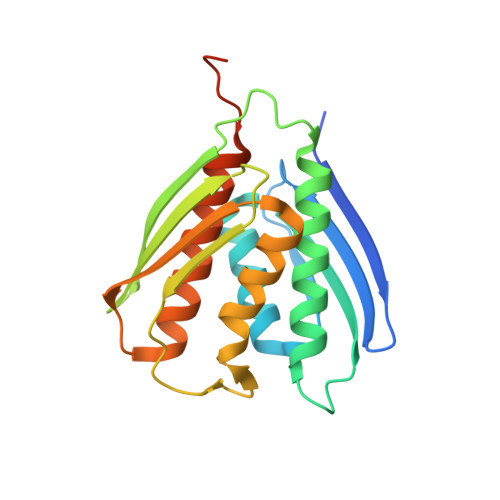Targeting imidazole-glycerol phosphate dehydratase in plants: novel approach for structural and functional studies, and inhibitor blueprinting.
Witek, W., Sliwiak, J., Rawski, M., Ruszkowski, M.(2024) Front Plant Sci 15: 1343980-1343980
- PubMed: 38559763
- DOI: https://doi.org/10.3389/fpls.2024.1343980
- Primary Citation of Related Structures:
7OJ5, 8QAV, 8QAW, 8QAX, 8QAY - PubMed Abstract:
The histidine biosynthetic pathway (HBP) is targeted for herbicide design with preliminary success only regarding imidazole-glycerol phosphate dehydratase (IGPD, EC 4.2.1.19), or HISN5, as referred to in plants. HISN5 catalyzes the sixth step of the HBP, in which imidazole-glycerol phosphate (IGP) is dehydrated to imidazole-acetol phosphate. In this work, we present high-resolution cryoEM and crystal structures of Medicago truncatula HISN5 ( Mt HISN5) in complexes with an inactive IGP diastereoisomer and with various other ligands. Mt HISN5 can serve as a new model for plant HISN5 structural studies, as it enables resolving protein-ligand interactions at high (2.2 Å) resolution using cryoEM. We identified ligand-binding hotspots and characterized the features of plant HISN5 enzymes in the context of the HISN5-targeted inhibitor design. Virtual screening performed against millions of small molecules not only revealed candidate molecules but also identified linkers for fragments that were experimentally confirmed to bind. Based on experimental and computational approaches, this study provides guidelines for designing symmetric HISN5 inhibitors that can reach two neighboring active sites. Finally, we conducted analyses of sequence similarity networks revealing that plant HISN5 enzymes derive from cyanobacteria. We also adopted a new approach to measure Mt HISN5 enzymatic activity using isothermal titration calorimetry and enzymatically synthesized IGP.
Organizational Affiliation:
Department of Structural Biology of Eukaryotes, Institute of Bioorganic Chemistry, Polish Academy of Sciences, Poznan, Poland.


















